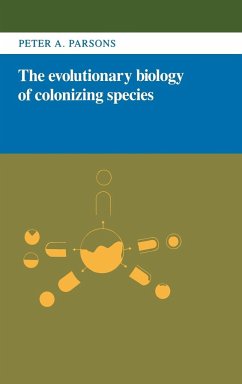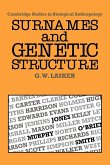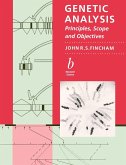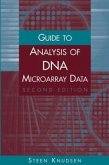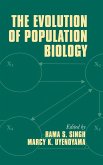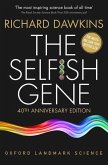In The Evolutionary Biology of Colonizing Species, Professor Parsons draws extensively on his own research of over 20 years to show that the fields of ecology, genetics, and behavior should be integrated and that, in fact, one field cannot be accurately represented without the others. Professor Parsons uses the colonizing species as a case study in the dynamics of microevolution at work in living systems. The colonizing species, a lie, and potentially disruptive force in a 'naïve' habitat, is studied primarily as an ecological phenotype and more generally as an ecological behavioral phenotype. Conventional life-history traits and components of fitness, can be incorporated into these phenotypes. Integrating genetic change, natural selection, and the interaction of the species with its environment and other living systems therein, the colonizing species is transformed into a sophisticated and complex source of data for understanding evolutionary biology. Throughout the book it is emphasized that using the organism as the unit of selection is the most direct way of understanding the nature of successful colonizing phenotypes, and, by using specific phenotypic criteria, the prediction of likely successful colonists can be made. Such criteria include tolerance of extreme environments, resource utilization, reproductive capacity, and relative abundance.
Table of contents:
Preface; 1. Introduction: colonists and habitats; 2. Genetics and ecology; 3. Physical conditions, resources, and ecological phenotypes; 4. Variability in natural populations; 5. Genetic variability, ecological phenotypes, and stressful environments; 6. Colonizing phenotypes and genotypes; 7. Behavioural variability in natural populations; 8. Habitat selection; 9. The ecobehavioural phenotype: generalists and specialists; 10. The ecobehavioural phenotype: biological control and domestication; 11. Parasites and plants; 12. Discussion and conclusions; Appendix; References; Index.
In The Evolutionary Biology of Colonizing Species, Professor Parsons draws extensively on his own research of over 20 years to show that the fields of ecology, genetics, and behavior should be integrated and that, in fact, one field cannot be accurately represented without the others.
In The Evolutionary Biology of Colonizing Species, Professor Parsons uses the colonizing species as a case study in the dynamics of microevolution at work in living systems.
Hinweis: Dieser Artikel kann nur an eine deutsche Lieferadresse ausgeliefert werden.
Table of contents:
Preface; 1. Introduction: colonists and habitats; 2. Genetics and ecology; 3. Physical conditions, resources, and ecological phenotypes; 4. Variability in natural populations; 5. Genetic variability, ecological phenotypes, and stressful environments; 6. Colonizing phenotypes and genotypes; 7. Behavioural variability in natural populations; 8. Habitat selection; 9. The ecobehavioural phenotype: generalists and specialists; 10. The ecobehavioural phenotype: biological control and domestication; 11. Parasites and plants; 12. Discussion and conclusions; Appendix; References; Index.
In The Evolutionary Biology of Colonizing Species, Professor Parsons draws extensively on his own research of over 20 years to show that the fields of ecology, genetics, and behavior should be integrated and that, in fact, one field cannot be accurately represented without the others.
In The Evolutionary Biology of Colonizing Species, Professor Parsons uses the colonizing species as a case study in the dynamics of microevolution at work in living systems.
Hinweis: Dieser Artikel kann nur an eine deutsche Lieferadresse ausgeliefert werden.

